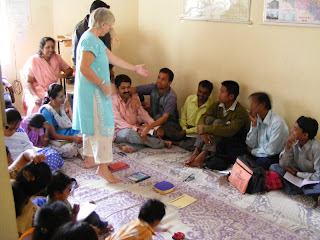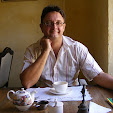Our journey through the south of India had taken us about a month. We travelled from Bangalore, south to Kerala and then on to Goa. Our plan originally was to head from Goa up to Mumbai and then on to Pune to do some volunteer teaching for a month and then travel through the north of the country. However during the time we were in Goa the Terrorist strikes happened in Mumbai on the 26th November 08. We were due to leave to travel to Mumbai the very next day. Needles to say we cancelled our tickets immediately.
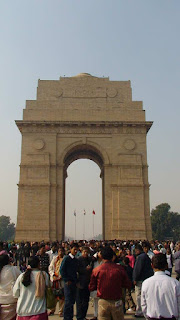
Not sure what to do next, we got in touch with the school we were to teach at and as it turned out, It would be more suitable to start our volunteer teaching at the beginning of the year, the 5th January 09. So that left us with about 6 weeks to fill in so we decided to do our travel in the North of India instead.
As train travel is dependent largely on ticket availability, we decided that this would be our guide. We found booking the trains at least two weeks in advance meant we could usually get seats easily on the day we wanted to travel. Therefore we had to spend an extra two weeks lying around on the beaches of Goa before we could travel anywhere. It was a tough job but somebody had to do it.
We decided that we would do our travelling through the north of the country now instead of after our teaching. Having about three weeks to fill in we simply decided to spent 5 days in each place, Delhi, Jaipur, Agra, Varanasi then on to Mumbai and be in Pune by the 5th of January and giving us plenty of time to see the attractions and surrounding areas as well.
We usually travelled by second class sleeper which provides curtain privacy and the beds are comfortable enough. On the occasion that you can’t get the seat you want we try upgrading to first class. This is what we had to do for our trip from Goa to Delhi. In first class, you get a square of carpet on the floor, the cabin is a bit tidier and you can lock your door and keep the pesky drink wallers from barging in 5 time an hour. So it was a comfortable enough 28 hour journey. We notice the further north you go, the latter the trains tend to be. We were due to arrive at about 4pm, still with enough daylight to find our way to our accommodation. As it turned out, we ended getting there just after dark, about 3 hours late so not bad going we were told.

My experience of India thus far had been relatively on par with other parts of Asia including Thailand and Malaysia in their hectic pace, standard of cleanliness and traffic congestion but nothing could prepare me for Delhi. From the moment the train pulled into the station when the coolies started grabbing our bags, to fighting our way out of the station to be inundated by taxi and rickshaw touts and making our way through the less that walking pace speed of the traffic to the Main Bazaar district where we were staying, it was overwhelming. The full shock of a city with 25 million people hit me like a ton of bricks.
Well it was either that or the dodgy Chicken Biriany I had on the train, because I ended up with a dose of Delhi belly. Not a good start, but 24 hours in bed (and on the loo), a fistful of tablet and lots of plain bread, I was finally ready to get out and see the city. Our first trip was to see the Red Fort and looking at the map we decided to walk from the Main Bazaar through the nearby train station and catch a rickshaw from the other side to save a dollar. I recon it took an hour to walk the 1 km. Walking through the market is interesting, crossing the streets, dangerous and walking through the train station downright stupid. Different train station, same touts.
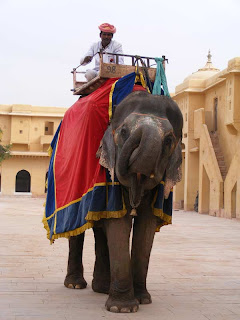
The Fort is a splendid example of Islamic Architecture and took us 3 or 4 hours to complete. The army protects all the sights around the city now and are set up with high profile security. But this doesn’t protect you from the hawkers and touts when you come out. We thought the taxi and auto rickshaw drivers were bad, but the cycle rickshaw drivers are far worse. They pull their bike up on the footpath and block your path and another will block you if you try to turn around. They also heavy the auto rickshaw drivers into not picking you up, making it very difficult. We made it back to our hotel eventually but it took a whole day to do the one sight.
After our previous attempt at sightseeing, we decided to do a tourist bus journey of the city covering a number of sites including the mandatory Government emporium. We also saw India Gate, Indira Ghandi House, Ghandi’s memorial and the government buildings in New Delhi. We enjoyed it although it was a little rushed. We also went to the Museum which included a Faberge collection much to my Wife’s delight. There are some pleasant places in Delhi but not enough to bring me back without a good reason.
From Delhi we headed to Jaipur, Rajasthan. When we left Australia, we made it a rule not to travel anywhere with a ‘Stan’ in it. Technically it’s not a ‘Stan’ because it has an H in it, but it is very ‘Stan’ like. There are more funny hats here of so many different designs, than anywhere else in the world per capita. However our only real destination here was Jaipur.

Jaipur turned out to be a real surprise. Apart from the chaotic city itself (only 2 million), it has more forts and palaces than anywhere else we have been. The forts are really impressive, built on top of the hills surrounding the city, with huge towering fortifications, they are truly impressive structures. Around the forts lie walls comparable to china that stretch off down the mountain side then back up the opposite side. Within the city walls are more palaces and an astronomical observatory.
In the suburbs surrounding Jaipur are more palaces again. We went to a one of these palaces, renovated by the Taj hotel group (5 star) and had to sit down at the restaurant and have a cup of tea, which cost us $18 but worth every cent just to be able to wander around the palace and beautiful gardens and use the luxurious loos. Also worth a visit is the monkey temple at Galta, actually two temples, a dozen shrines, some sacred pools nestled in a gorge and covered in monkeys. This is the same temple in the National Geographic TV show, Monkey Thieves. We were able to fill in our 5 days in Jaipur comfortably.

Our next stop was Agra, home to the fantastic Taj Mahal. Apart from the Taj, the Red Fort and Fatehpur Sikri, (a deserted palace outside Agra), 1 or 2 days at most would be enough for Agra, we were there 4 days too long. All the tourist hotels are grouped in one area with very few restaurants or other attractions or distractions. All the Rickshaw drivers circle this area with dollar signs in their eyes and a trip anywhere can’t be done without at least one trip to an Emporium. We thought the Taj was great but I wouldn’t recommend staying the night here at all. Get in and get out!
Next stop, Varanasi, wow what a place, another hectic and chaotic town, at least on the outside. Fortunately we had someone to meet us at the train station and guide us to the hotel. It’s just as well because finding our way through the winding streets, Bazaar and alleyways down to the Ganges would be impossible. The city is billed as the oldest in the world and India’s holiest city. It is an incredible sight looking up and down the Ganges from our balcony. A ceremony is held every night celebrating the river. It’s an hour long ceremony, with lots of incense, smoke and fire along with bell ringing chanting, gongs, water sprinkling and flower tossing. It’s a fantastic experience.
Another ‘must do’ in Varanasi is a boat ride up and down the river, preferably at either dawn or dusk. The light being best at that time of day and the perpetual smoke in the air from the cremations ads an eerie sense of mood to the occasion. Yes that’s right up to 80 people a day are cremated on the steps of the Ganges. The boat trip takes you past at a sedate distance, but if you’re walking past, touts will try to get you to pay money to see it up close...mmm. The river it’s self is a hive of activity all day long and a good part of the night too. People come to wash and bath in it believing it will wash away the sins of a thousand lifetimes, but really they are probably poisoning themselves. The river is so dirty it is literally toxic and has a zero oxygen level in it. Having said that, we did see the legendary Ganges Dolphin, a Dugong like creature, said to be blind and swims by sonar. Believe it or not!

We comfortably spent our 5 days, wandering the Ghats, exploring the bazaars and generally chilling out on the balcony overlooking the Ganges. It’s a great place to explore your Zen self.
From Varanasi we took what was our longest single trip yet on our 10 month journey. A hellish 38 hour train trip, Varanasi to Mumbai. The train was late getting to us and kept getting later all the way. To make matters worse the train didn’t go all the way into town but dropped us at a station on the outskirts of town at 4 in the morning. However all the Taxi touts know when the train is due in as they descend on the train like locusts. We had one attach himself to us that we couldn’t shake, even after we found a taxi ourselves, he tried to climb in and come for the ride, unbelievable. Well it gets worse before it gets better, yep we got a flat tyre on the way into town and had to unload all the luggage from the boot, while the vagrants milled about. To give the driver credit, he did have a spare tyre with canvas on it, no rubber mind you but it did stay up until it got us to our hotel.
Next we were shown into what looked like a derelict building, through an abandoned apartment to a room at the back, temporary accommodation until the morning we were promised. It did have a locking door though. Better still it was quiet and had a reasonably comfortable bed. Oh I haven’t mentioned about the beds in India. Most mattresses are made from coconut husk coir and are as hard as a rock, so a real mattress is like gold! As it turned out we decided to stay in that room for the second night as well.
Visiting Mumbai only a month after the attacks was a very safe experience. There were 50 or more police, army and other servicemen on every street. Machine gun bunkers on every corner and there was even a submarine patrolling the harbour, I kid you not. We were staying just behind the Taj Hotel where the now famous news footage of the burning building was taken. Unfortunately the water front around the Taj and the landmark attraction Gateway to India was still blocked off. We went for a ferry ride out to Elephanta Island an hour away to see the cave temples, impressive enough if you don’t get out to see Ellora Caves, mentioned latter. We had dinner that night at Leopold’s a Mumbai institution as far as Restaurants go. It was also involved in the Mumbai attacks as well, when a gunman walked in and killed staff and patrons. Bullet holes are left on display in a way to memorialise what happened. We ate there to pay respect to the staff and patrons who lost their lives there. There is also a donation tin on the counter to help the families affected.

Mumbai is an enormous city, we only spent one day and saw one very small part, so we hope to go back one day and have a proper look at the place. Our time schedule was tight and we had to leave to get to Pune to do our teaching.
We took the train to Pune, still pronounced Poona by everybody. It was only a three hour trip but we had the aircon sleeper as it is the most comfortable way to travel, you still get the pillows and blankets anyway. Pune is a modern city by Indian standards and is also a University town and is only about 150 km from Mumbai and up in the hills so it’s a bit cooler. Like every Indian city it’s very busy and chaotic with the usual touts at the train station.
We stayed the weekend with our hosts, Melinda and Brian who live in a lovely apartment block with their two children. It’s is certainly different here than elsewhere in India. We even attended a Jazz festival, of all things. The festival was held at an amphitheatre attached to a brand new shopping mall, catering for home furnishings. The amphitheatre has a water and laser light show that was going on in the background of the Jazz bands. It was spectacular, but we really never expected to see anything like this in India...Wow!
After some new year juggling, our host Melinda found us some teaching work in Aurangabad, 200km away from Pune, with a Christian group called Youth With a Mission, YWAM. They are a community organisation, helping the under privileged and poorest in their communities. They run a child care centre for street children that live on the railway stations and are providing micro loans and support for abandoned women by helping them own sewing machines and providing lessons in how to use them. We provided a week of intensive English training. Louise took the beginners, mostly women and I was with the intermediates. We also did a children’s class in the evenings. It was a lot of fun and we were welcomed very warmly and given a place to stay, basic but comfortable enough. I got sung happy birthday to in Marathi, the local language and Louise & I were blessed and decorated with garlands of flowers.
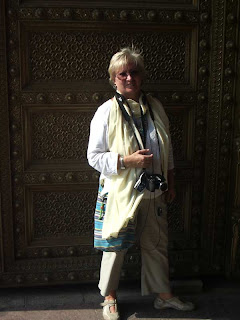
Aurangabad itself is much like a lot of small Indian town, chaotic dusty and strewn with rubbish, but it does have its own version of the Taj Mahal (not quite as grand), old city walls and a very long history. It also has a fantastic fort about 20 km away. 100km away is the Heritage listed Ajanta and Ellora caves. It’s a full days trip but well worth it. We got the feeling of Egypt and Ankor Watt from these places.
We then travelled back to Pune to teach for another 3 week. The Gyanankur English School is on the outskirts of Pune, set amongst the rural farmland and local villages. There are about 200 children at the school ranging from 3 to about 8 years, nursery to 3rd form. The children come from the surrounding villages, disadvantaged, orphaned and homeless children and children from NGO’s. Resources at the school are at bursting point and there is currently a 40% shortfall in their budget. Donations make up some of this but more is needed. Please visit their website for more information.
http://www.gyanankur.com/
We taught during the week and on the weekend we visited an area around Pune. On the weekend of Australia Day, the 26th January it is also Independence Day for India. We took the opportunity to get away up to the hill station village of Mahabaleshwar. Knowing that it was a long weekend, we booked a room ahead a few days prior to our departure. We took local busses up there, which was adventurous. After our 6 hour bus exploration of the countryside we arrived and found our hotel room had been given away, probably to someone who bribed their way into our room. So I don’t recommend the Hotel Mann Palace at all as the person at the counter was rude when we tried to ask why our reservation wasn’t kept. Being a long weekend we wandered the streets looking for a room, but it was heavily booked out. We did eventually find a room elsewhere at an exorbitant $70 a night for a room we would normally pay about $15 for, we stayed 2 nights.
That aside the town is quite pleasant, although very very busy on this weekend, but it had a good carnival atmosphere, everybody was there for a good time. The area is similar to the Blue Mountains in Sydney in a way and it is close enough to both Pune and Mumbai to attract crowds for weekends and holidays. At 1.3km above sea level it has some very scenic views to admire. There is also a fair amount of tackiness with horse and camel rides, shooting arcades, try your luck type games and slot machines. There are venders of all types selling snow cones, corn on the cob and all types of food. One of the big attractions is the strawberries. You can get huge mugs of strawberries and cream for 50 cents.

In February 09, with our Teaching finished, it was eventually time to head home. Easier said than done. We could have paid $1200 each and flown home from Mumbai to Brisbane in about 14 hours but we were on a very tight budget and found the cheapest way home was out of Bangalore where we had arrived. We managed to get tickets home for about $500 each but it took us 5 days. We left Pune on the Monday and caught the Train back to Bangalore, about 18 hours then over night in Bangalore and flew out at Midnight the following day. We arrived in Singapore in the morning and had a 14 hour wait in the airport and another flight at 9 that evening and arriving Darwin on Friday morning for immigration purposes then finally into Brisbane about 11am.
We really enjoyed our time in the south, the North is so much busier, dirtier and more crowded, but with so much more visible history and architecture, plus our teaching experience has been a thorough education in education. We enjoyed the whole Indian experience and while there are challenging days, people and places to deal with, we realise that these challenges make us better people and travellers.
Post Script: After a 4 month stay back in Australia, we are now about to embark on a 12 month teaching contract in Saigon, Vietnam starting on 21st June 2009. Stay tuned.

























